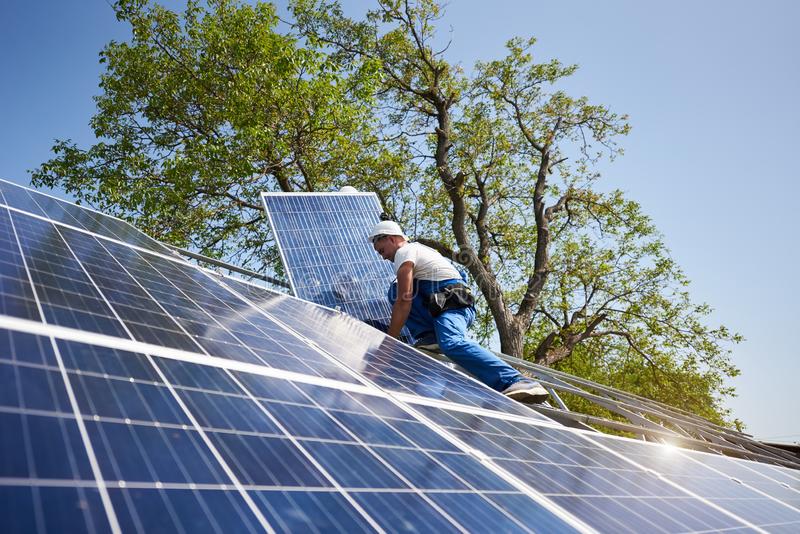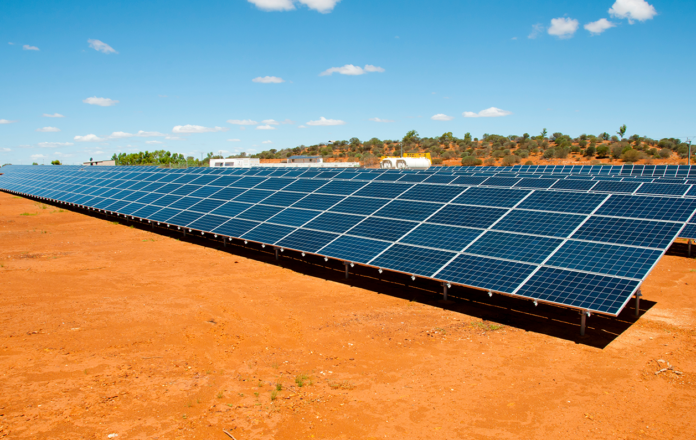The Stand Alone Solar System is quickly becoming one of the most sought-after solutions for cheap and reliable power. This type of system is self-contained and requires no connection to the electrical grid, which makes it an ideal solution for remote locations or areas with limited access to electricity. As energy costs continue to rise, stand-alone solar systems are becoming an increasingly attractive option for anyone looking to save money while still having access to reliable power. In this blog post, they will explore the benefits of a stand-alone solar system and why it’s the ultimate cheap power solution. Are you looking for an affordable and reliable source of energy? Then stand-alone solar systems may be the perfect solution for you!
Stand -alone solar system
A stand-alone power system is an independent electricity system that runs entirely independently without needing a connection to an external grid. A stand-alone solar power system utilizes photovoltaic (PV) cells to collect sunlight, which is converted into direct current (DC) electricity. This DC electricity is then sent through an inverter that converts it into alternating current (AC), so it can be used for home appliances and electronic devices. This type of solar power system is ideal for areas far away from the grid and those who want to use renewable energy sources. It is also beneficial for people in rural or remote areas who do not have access to the grid or those who wish to become more energy independent.
 Stand-alone solar power systems are becoming increasingly popular
Stand-alone solar power systems are becoming increasingly popular
Stand-alone solar power systems are becoming increasingly popular due to their low cost, long-term sustainability and the amount of energy they can produce. They are especially beneficial for people looking to reduce their electricity bills, as they can provide clean and cheap electricity without being connected to the grid. In addition, these types of solar power systems require minimal maintenance and are relatively easy to install. Furthermore, they are very durable and can last up to 25 years with proper care and maintenance. Finally, they are environmentally friendly, producing no greenhouse gases while providing a reliable power source.
Reliable performance, and cost-effectiveness
For these reasons, stand-alone solar power systems are becoming an increasingly attractive option for residential and commercial customers. With their ease of installation, reliable performance, and cost-effectiveness, these solar systems make for an excellent choice for those looking for an affordable alternative to traditional forms of electricity. In addition to cutting energy costs, a stand-alone solar system can add value to your home. Prospective buyers may view homes equipped with these systems as having a higher value and a better return on investment. Furthermore, investing in a stand-alone system can reduce one’s carbon footprint since there’s no reliance on nonrenewable energy sources like coal or natural gas. As such, opting for a stand-alone solar system is financially sound and beneficial for the environment.
cost
Installation costs vary depending on the complexity of the system. Once your stand-alone solar system is installed, your monthly expenses will be lower than you typically pay for electricity. This is because you generate your electricity and don’t have to rely on public utilities. Additionally, you can save even more money by taking advantage of net metering and other tax credits that may be available. Net metering allows you to store excess energy produced by your stand-alone system in a virtual account with your local utility company. You can draw from this virtual account when your energy needs exceed what your system produces. You are then only charged for the difference in energy used or stored in the virtual account. On top of this, many areas offer various tax credits, which can help offset some of the initial investment into a stand-alone solar system. These credits and savings in monthly electricity payments make investing in a stand-alone solar system very attractive to homeowners
The benefits
One of the most significant benefits of having a stand-alone power system is its ability to provide energy independence. Stand-alone solar systems are not connected to any grid and therefore do not rely on traditional energy sources or utility companies for power. This means you can have ability even when the grid is down due to natural disasters or other events. Additionally, because you are producing your electricity, you can save money in the long run, as you will no longer need to pay electricity bills. Another benefit of a stand-alone power system is its flexibility. Stand-alone solar systems can be used in areas not serviced by traditional utility companies, allowing individuals to access clean and affordable energy in remote locations.
Stand Alone Power System is incredibly eco-friendly
Finally, Stand Alone Power System is incredibly eco-friendly. Individuals can reduce their carbon footprint and help fight climate change by using solar energy instead of relying on nonrenewable resources. Furthermore, because solar systems generate clean energy, they can help reduce air pollution and minimize our environmental impact. In addition to providing an alternative energy source, these systems require very little maintenance once installed, saving time and energy. Even if the initial cost of purchasing and installing a stand-alone power system is expensive, it pays off over time with savings from not paying electricity bills.
There any drawbacks
While stand-alone solar systems have many benefits, some drawbacks should be considered before investing in them. The installation cost is one potential drawback of a stand-alone solar system. The initial cost of the equipment and installation can be considerable and will vary depending on the size and complexity of the system. Additionally, these costs can increase quickly if the system requires additional components such as batteries. Stand-alone solar systems also require regular maintenance to keep them working efficiently. This includes regularly cleaning and inspecting the panels, checking wiring connections and other components, and replacing parts when necessary.
Stand-alone solar systems are only sometimes reliable during a power outage
These costs can add up over time and offset any savings from installing a stand-alone solar system. Finally, stand-alone solar systems are only sometimes reliable during a power outage. If the system does not have batteries or other backup power sources, it may be unable to provide electricity during outages. Additionally, in some areas, stand-alone systems are not eligible for net metering programs, which means they cannot be connected to the grid and benefit from the lower associated rates. Furthermore, many governments offer tax credits and incentives for installing solar systems, making them even more attractive to consumers. Finally, with technological advancements, stand-alone solar systems are becoming increasingly efficient, providing more reliable power and less waste.
Conclusion
A stand-alone solar system can provide an inexpensive and efficient way to generate electricity. It is an excellent choice for those who live in remote areas or are looking for a reliable power source. With the cost of solar panels decreasing yearly, this is becoming an increasingly popular choice for households. The benefits of a stand-alone system include independence from traditional power sources, reduced costs and lower environmental impact. However, some drawbacks should be considered, such as the need for maintenance, storage space and potentially more extended payback periods. Overall, a stand-alone solar system is an excellent choice for those who want to save money and have more control over their energy supply.
Related Websites:
Articles on Blogshunt
Articles on tbablogs
Articles on Blogspeoples
Articles on Thebigblogtheory
Articles on Allcityforums

